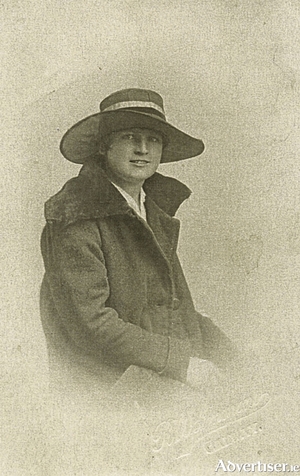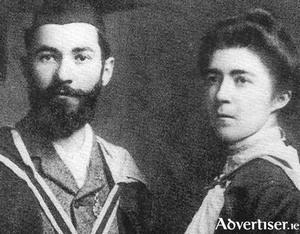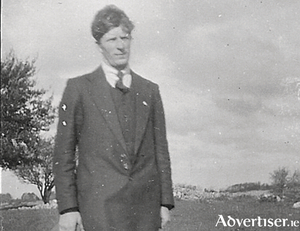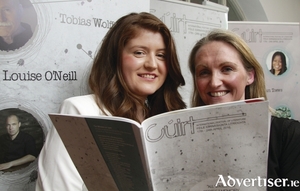Search Results for 'officer'
168 results found.
‘Deep humiliation and bitterness’
Despite the crucial role many women played in the 1916 Rising, very few were given the credit they deserved. In fact some women were refused a pension for many years because they were not men.
‘No time for fainting’

‘The small girl smiles. One eyelid flickers. She whips a pistol from her knickers. She aims it at the creature’s head. And bang bang bang, she shoots him dead.’
The woman who threw a hatchet at the prime minister

There was hardly a marriage of two minds greater than that between Hanna Sheehy and Francis Skeffington, who were married in Dublin in 1903, and who committed their lives to many causes, particularly feminism, pacifism, socialism, and nationalism. Hanna was one of the founders of the Irish Women’s Franchise League, determined to win votes for women. As part of its disobedience campaign, women were urged not to fill in the 1911 Census form correctly. Her husband Francis, totally supportive in all her endeavours, and as head of the household, submitted the following:
‘They all died well, but MacDonagh died like a prince.’
Padraic Pearse, the self-identified President of the Provisional Government, and Commandant-General of the Army of the Irish Republic was rushed to the gallows, or in this case to the grim stonebreakers yard at Kilmainham jail.
Galway in the weeks leading up to the Rising

On Tuesday 25 April 1916, Galway became the only county outside of Leinster to take up arms against the British state during the Easter Rising. In fact, only three parts of provincial Ireland participated in the Rising: Enniscorthy in county Wexford; Ashbourne in north county Dublin; and county Galway, where several hundred rebels took over 600 square miles of the east of the county between Tuesday 25 April and Saturday 29 April. Commemorative documentaries and history books pay little attention to the Galway Rising with the focus tending to be on the more dramatic events that took place in Dublin, but Galway’s Rising was an important part of the story of the Easter Rising; and the story of the hundreds of brave Galway men who stood up to the British Empire in April 1916 deserves to be told in detail. In this series of five articles, FERGUS CAMPBELL will explain why Galway rose when so many other parts of provincial Ireland did not, and he will also tell the story of what happened in Galway during the Rising, and the impact that the Rising had on Galway society. This account is based on many documents, police reports, newspaper accounts and memoirs but most of the quotations are derived from the witness statements that Galway rebels made to the Bureau of Military History during the 1940s and 1950s, and these can be read online.
Bank of Ireland announces support for 110 student clubs and societies
Bank of Ireland this week announced a programme of support for the development of Sports Clubs and Societies at NUI Galway. The significant investment from Bank of Ireland will help fund the development of the clubs and societies and help improve the overall quality of the student experience at the University.
‘A truly intimate, international festival’ –Cúirt programme launched

IT MAY have been a miserable raiany evening, but that did nothing to deter or dampen the spirits of the many Cúirt enthusiasts who thronged the House Hotel on Tuesday evening for the programme launch of this year’s festival.
Republican prisoners in the Town Hall
This remarkable photograph was taken in 1920/21. It shows a group of republican prisoners who are being held in the Town Hall. They are surrounded by barbed wire and are being carefully watched by a soldier you can see standing beside the tin hut. He is wearing a ‘Brodie’ helmet which was a steel combat helmet invented by Englishman John Brodie during World War I. There were probably more soldiers on duty inside the hut watching the detainees, the photographer, and anyone else who might have been was passing. A notice on one of the windows reads “No one is allowed within ten yards of this building.”
Uachtarán na hÉireann to launch Bilingual City Initiative in Galway City Council on Monday
Uachtarán na hÉireann, Michael D. Higgins will launch a bilingual city initiative for the City of Galway as part of a programme of events for Seachtain na Gaeilge 2016.
Making your mind up time

A total of 92,315 people are eligible to go to the polls today in Mayo with 200 having already voted on the islands yesterday, where there were 121 eligible voters on Clare Island, 29 qualified voters on Inishbiggle and 50 registered voters on Inishturk. The 92,315 eligible voters in Mayo represents a drop of 8,645 from the 2011 General Election, with the majority of those votes in the south Mayo region now being cast in the Galway West - South Mayo constituency. The number of eligible voters does not include postal voters or special voters. The figures were released by returning officer Fintan Murphy on Wednesday afternoon, and he will be the man who will be running the show in the count centre in Castlebar on Saturday when the boxes are opened at 9am.

